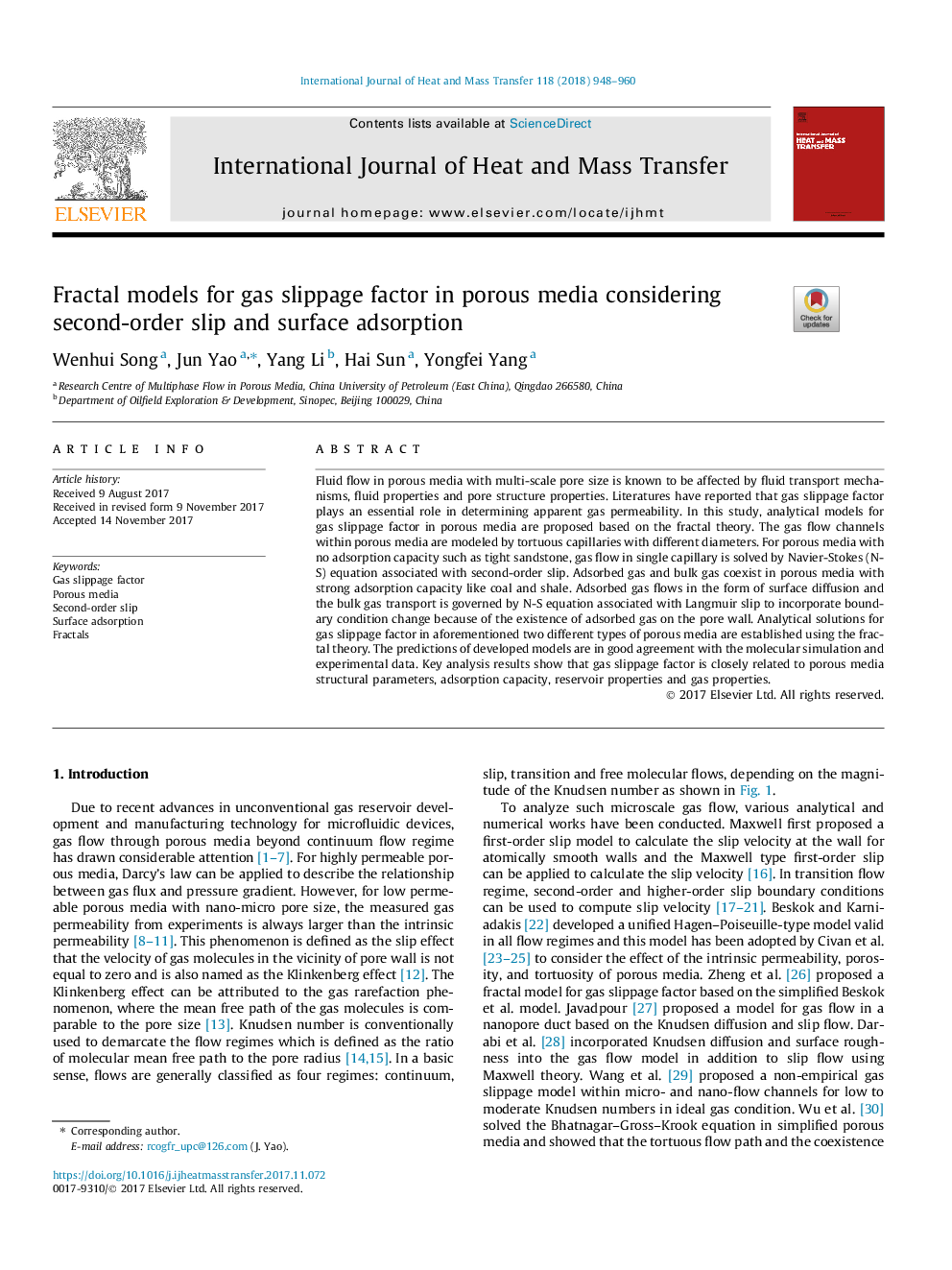| Article ID | Journal | Published Year | Pages | File Type |
|---|---|---|---|---|
| 7054813 | International Journal of Heat and Mass Transfer | 2018 | 13 Pages |
Abstract
Fluid flow in porous media with multi-scale pore size is known to be affected by fluid transport mechanisms, fluid properties and pore structure properties. Literatures have reported that gas slippage factor plays an essential role in determining apparent gas permeability. In this study, analytical models for gas slippage factor in porous media are proposed based on the fractal theory. The gas flow channels within porous media are modeled by tortuous capillaries with different diameters. For porous media with no adsorption capacity such as tight sandstone, gas flow in single capillary is solved by Navier-Stokes (N-S) equation associated with second-order slip. Adsorbed gas and bulk gas coexist in porous media with strong adsorption capacity like coal and shale. Adsorbed gas flows in the form of surface diffusion and the bulk gas transport is governed by N-S equation associated with Langmuir slip to incorporate boundary condition change because of the existence of adsorbed gas on the pore wall. Analytical solutions for gas slippage factor in aforementioned two different types of porous media are established using the fractal theory. The predictions of developed models are in good agreement with the molecular simulation and experimental data. Key analysis results show that gas slippage factor is closely related to porous media structural parameters, adsorption capacity, reservoir properties and gas properties.
Related Topics
Physical Sciences and Engineering
Chemical Engineering
Fluid Flow and Transfer Processes
Authors
Wenhui Song, Jun Yao, Yang Li, Hai Sun, Yongfei Yang,
